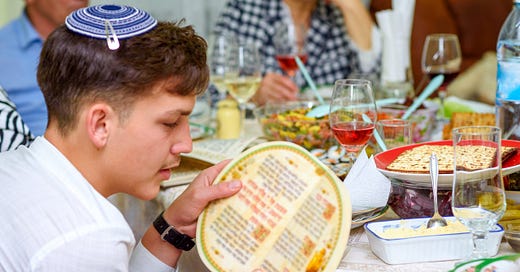Jewish people all over the world look forward to Passover – planning, scheduling, and preparing for months. We’re excited to spend time with family and friends, sharing experiences and creating traditions and memories. This anticipation is often shared across generations, passed on from grandparents to children, as the rituals provide a sense of connection to history and to one another.
As much as Passover is a time of joy, it can also feel isolating and challenging for some individuals with disabilities and their families. Let’s take this opportunity to reflect on how we can make Passover traditions more inclusive. Creating a more inclusive environment during Passover can transform the experiences for every participant, ensuring that the spirit of the holiday is truly accessible to all.
If you are planning a communal Seder, check out our article with suggestions on how to make it more accessible for everyone. Here are some other considerations when planning a Seder of any size:
Physical Accessibility:
Ensure the Seder location is wheelchair-friendly, with clear paths and appropriate seating, if needed
Provide easy access to restrooms for those with mobility needs
Think about those who may not use a wheelchair but may have difficulty sitting in tight spaces or need breaks to stretch their legs
Accommodations for Immunocompromised Individuals:
Mask-Friendly Spaces: Encourage or require masking (and/or offer masks), especially in indoor spaces.
Air Filtration: Use HEPA filters and CO₂ monitors to ensure good air quality and ventilation.
Sanitization: Provide hand sanitizing stations and regularly disinfect high-touch surfaces.
Hybrid Options: Offer a virtual attendance option that is engaging, with real-time participation, chat, etc.
Low-Density Areas (or outside space): Designate areas with more spacing between seats or tables.
Let people know ahead of time about safety protocols, ventilation, masking expectations, and virtual options before the event.
Sensory Accommodations:
Dim bright lights or offer noise-canceling headphones / earplugs for those sensitive to light or sound
Build in breaks; don’t wait for a meltdown! Help individuals understand it is okay for them to take a break if needed
Create a calming environment away from the main event space for individuals with sensory processing needs or for people who may need to take a break from loud or over-stimulating activities
Engage All of the Senses. Make it Interactive, and Bring your Seder to Life
Offer large-print Haggadahs for people with visual impairments
Provide alternative formats for those with reading difficulties
Have a visual schedule of what is happening at each part of the seder. Click here for an example of a visual schedule
Make sure directions are step-by-step, clear, and explained verbally as well as visually
Use visuals to tell the story of the Exodus
Use tactile or visual aids to engage children in the Seder
Give children the opportunity to lead parts of the seder
Act out parts of the seder or use puppets to retell the story
Welcome and encourage questions
Throw in a good game and maybe ask one of the children to help lead the game
Encourage participants to share ways they would like to participate
Sing songs, dance, be silly - have fun with it!!
Most importantly, be patient and flexible! Be on the lookout for how your guests are feeling; pivot and get creative with solutions if accommodations are needed.
As we gather to celebrate Passover, always remember that inclusivity is not just about accommodating disabilities—it’s about embracing everyone and ensuring that all individuals, regardless of ability, can partake fully in the rich traditions that make this holiday so special.
This article originally appeared on Mataninc.org.
Michelle Steinhart is a Program Manager at Matan. She has worked in Jewish education and Jewish Special Education for over 30 years, in both formal and informal settings. In addition to her work at Matan, Michelle serves as the Director of Learning and Inclusion at Temple Israel Center in White Plains, NY. Michelle graduated from Yeshiva University’s Stern College for Women with a Bachelor of Arts in Education and an Associate’s Degree in Judaic Studies. Michelle went on to earn her Master of Arts in Special Education at Hunter College of the City of New York. Michelle has led professional development sessions for various synagogues, schools and agencies and serves as a consultant for synagogues working to build inclusivity in their communities. Michelle was a 2002 recipient of the Grinspoon Steinhardt Award for Excellence in Jewish Education. Michelle and her husband Yaakov live in Rockland County, NY with their children.




Very good suggestions to follow and so compassionate as well. I hope lots of people heed this excellent advice.